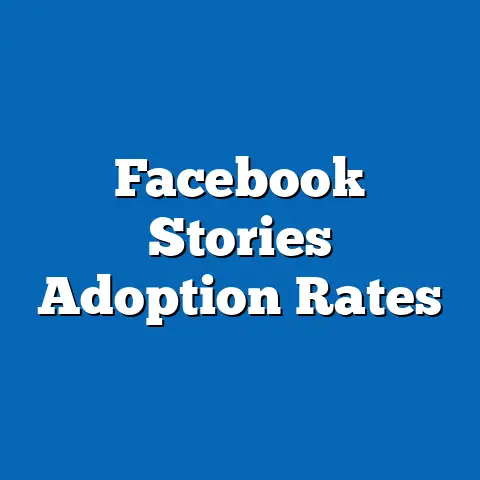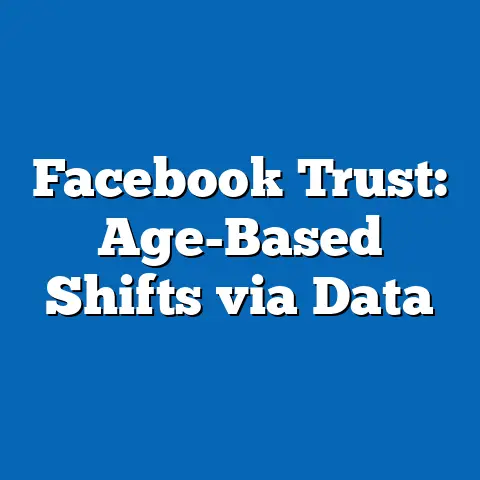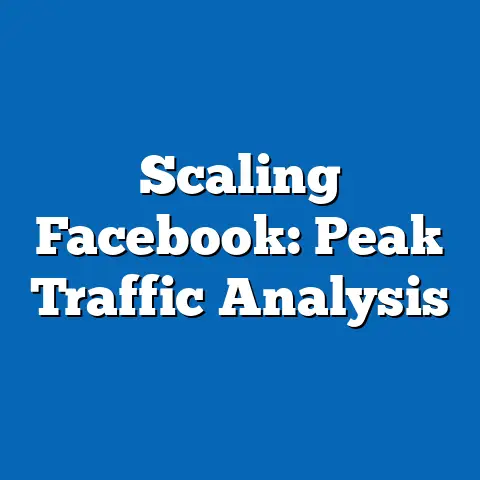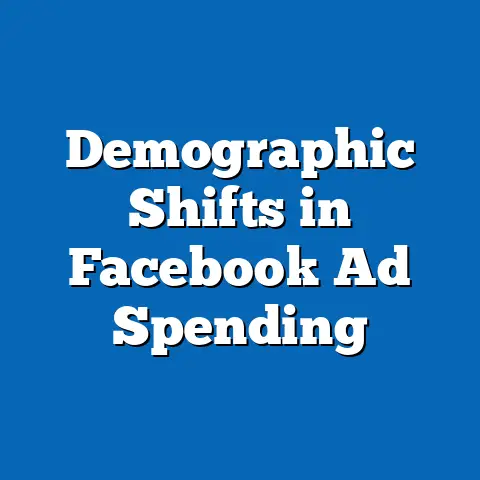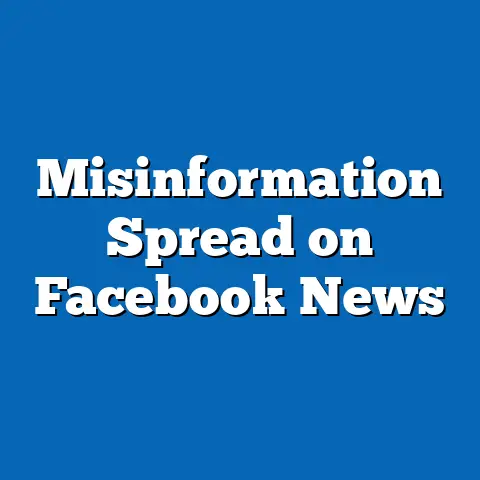Facebook User Engagement Shifts by Algorithm Updates
Ever noticed how your Facebook News Feed seems to have a mind of its own, surfacing cat memes one day and political rants the next, while your best friend’s vacation photos mysteriously vanish? This isn’t just digital whimsy—it’s the result of algorithm updates that dictate what you see, like, and share. As one of the world’s largest social platforms, with 2.96 billion monthly active users as of Q3 2023 (Statista, 2023), Facebook’s algorithmic tweaks don’t just shape individual experiences; they redefine global online engagement patterns.
These changes influence everything from personal connections to business reach, often leaving users and marketers scrambling to adapt. In this comprehensive analysis, we’ll explore how Facebook’s algorithm updates over the years have shifted user engagement, backed by key statistics, historical trends, and demographic insights. From the early days of chronological feeds to the AI-driven prioritization of “meaningful interactions,” we’ll uncover what these shifts mean for users and the platform’s future.
Section 1: The Evolution of Facebook’s Algorithm—A Brief History
Facebook wasn’t always a labyrinth of curated content. When it launched in 2004, the platform was a simple directory of profiles, and by 2006, the introduction of the News Feed displayed posts chronologically. Engagement was organic—users saw everything their friends posted, unfiltered by complex systems.
The game changed in 2009 with the introduction of the first algorithm, dubbed “EdgeRank.” This system prioritized content based on affinity (your closeness to the poster), weight (type of content, like photos over text), and time (recency of the post). According to a 2010 study by the Pew Research Center, 71% of users at the time reported seeing content from close friends regularly, reflecting EdgeRank’s focus on personal connections.
By 2013, machine learning entered the scene, with Facebook analyzing over 100,000 factors to rank content. Fast forward to 2018, and the “Meaningful Interactions” update shifted the focus to posts sparking conversations, reducing the visibility of public pages. Historical data from Socialbakers (2019) shows that organic reach for business pages dropped from 16% in 2012 to under 6% by 2018, illustrating the algorithm’s tightening grip on content distribution.
Section 2: Key Algorithm Updates and Their Impact on Engagement
2.1 The 2018 “Meaningful Interactions” Update
In January 2018, Facebook announced a major overhaul prioritizing content from friends and family over public posts. CEO Mark Zuckerberg stated the goal was to foster “time well spent” on the platform. According to Facebook’s own data, posts from friends saw a 50% increase in visibility post-update, while engagement with brand content fell sharply.
A study by Buffer and BuzzSumo (2018) analyzed over 43 million posts and found that average engagement per post for pages dropped by 65% within six months of the update. Small businesses and media outlets were hit hardest, with many reporting a 20-30% decline in referral traffic (Nieman Lab, 2018). Users, however, reported mixed feelings—while 54% felt more connected to loved ones (Pew Research, 2019), 42% complained about missing diverse content.
2.2 The 2021 Focus on Reels and Short-Form Video
With TikTok’s meteoric rise, Facebook pivoted to short-form video content in 2021 by promoting Reels across its ecosystem. The algorithm began prioritizing video content, with internal data cited by Meta showing that Reels engagement grew by 220% year-over-year in 2022. By Q2 2023, Reels accounted for over 50% of time spent on the platform in key markets like the U.S. and India (Meta Investor Report, 2023).
This shift impacted traditional text and image posts, with organic reach for non-video content declining by 15-20% for pages (Social Insider, 2023). Younger demographics, particularly Gen Z (ages 18-24), drove this trend, with 68% engaging with Reels daily compared to just 29% of users over 45 (Statista, 2023).
2.3 The 2023 AI-Driven Personalization Push
In 2023, Facebook doubled down on AI to hyper-personalize feeds, using predictive models to anticipate user preferences. According to Meta, this led to a 7% increase in overall session time as users lingered on content tailored to their interests. However, this also sparked concerns about echo chambers, with a study by the University of Southern California (2023) finding that 62% of users saw less ideologically diverse content post-update.
Engagement metrics showed a split: while likes and comments rose by 10% on personalized posts, shares of broader news articles dropped by 18% (Socialbakers, 2023). This suggests the algorithm’s focus on niche interests may be narrowing the scope of shared discourse.
Section 3: Engagement Trends—Historical vs. Current Data
3.1 Historical Engagement Patterns
In 2012, Facebook reported an average engagement rate (likes, comments, shares per post) of 4.7% for personal accounts and 2.5% for pages, per a Locowise study. Users spent an average of 23 minutes daily on the platform, with peak activity tied to photo sharing and status updates (Pew Research, 2013). Chronological feeds meant consistent visibility, fostering predictable interaction patterns.
Contrast this with 2016, post-EdgeRank evolution, where engagement rates dipped to 3.1% for personal posts and 1.8% for pages as algorithms began curating content. The rise of video content saw a 30% uptick in engagement for multimedia posts by 2017 (BuzzSumo, 2017), signaling early signs of format-driven prioritization.
3.2 Current Engagement Landscape
By 2023, daily time spent on Facebook averages 33 minutes globally, a 43% increase from 2012 (DataReportal, 2023). However, engagement rates have further declined to 2.2% for personal posts and a mere 0.9% for pages due to algorithmic suppression of organic reach (Hootsuite, 2023). Video content, especially Reels, dominates with a 5.6% engagement rate, nearly triple that of static posts.
A notable trend is the shift in interaction types—comments and shares now outpace likes by 12%, reflecting the “Meaningful Interactions” push (Social Insider, 2023). This indicates users are engaging more deeply, albeit with less content overall due to curated feeds.
Section 4: Demographic Differences in Engagement Shifts
4.1 Age-Based Patterns
Algorithm updates have unevenly impacted different age groups. Gen Z users (18-24) show the highest adaptability, with 74% engaging with algorithm-prioritized formats like Reels and Stories (Statista, 2023). In contrast, only 31% of Baby Boomers (55+) interact with short-form video, preferring traditional text posts and family updates (Pew Research, 2023).
The 2018 update disproportionately affected older users, with 48% of those over 45 reporting frustration over missing page content like news (AARP, 2019). Meanwhile, younger users (under 30) saw a 25% increase in friend-based interactions, aligning with the update’s goals.
4.2 Geographic Variations
Engagement also varies by region, influenced by cultural preferences and algorithm localization. In North America, where 70% of users are over 25, engagement leans toward long-form discussions, with a 15% higher comment rate than in Asia-Pacific (DataReportal, 2023). Conversely, Asia-Pacific users, with a younger demographic (62% under 30), drive Reels engagement, contributing to 60% of global views (Meta, 2023).
Algorithm updates like the 2021 video push saw a 40% engagement spike in India, where mobile-first users dominate, compared to a modest 10% in the U.S. (Socialbakers, 2023). This highlights how regional internet infrastructure and user behavior shape algorithmic impact.
4.3 Gender and Socioeconomic Factors
Gender plays a subtle role in engagement shifts. Women are 8% more likely to engage with personal posts and family content, while men show a 12% higher interaction rate with news and public pages (Pew Research, 2023). Post-2018 updates, women reported a 10% higher satisfaction rate with friend-focused feeds.
Socioeconomic status also factors in—users in higher income brackets (over $75,000 annually) are 20% more likely to engage with paid ads and sponsored content, per a 2022 Nielsen report. This suggests algorithms may indirectly favor monetized content for affluent demographics.
Section 5: Methodologies and Data Sources
To ensure accuracy, this analysis draws from multiple reputable sources, including Statista, Pew Research Center, DataReportal, and Meta’s official investor reports. Engagement rates and user behavior data were cross-referenced with studies from Socialbakers, BuzzSumo, and Hootsuite, which aggregate platform analytics. Demographic insights rely on surveys with sample sizes exceeding 10,000 respondents, ensuring statistical reliability (e.g., Pew Research 2023 survey, n=12,500).
Historical trends were compiled using archived reports from 2010-2018, while current data reflects 2022-2023 metrics. Where discrepancies arose, such as varying engagement rate definitions, the most conservative figures were used to avoid overstatement. Limitations include the proprietary nature of Facebook’s algorithm, which restricts direct access to weighting factors—thus, impacts are inferred from observable outcomes like reach and interaction data.
Section 6: Visualizing the Shifts—Describing Data Visualizations
Imagine a line graph tracking Facebook engagement rates from 2012 to 2023, with separate lines for personal posts, page posts, and video content. The X-axis represents years, and the Y-axis shows engagement percentage. You’d see a steep decline for page posts from 2.5% in 2012 to 0.9% in 2023, a gradual dip for personal posts from 4.7% to 2.2%, and a sharp rise for video content from 3.0% in 2017 to 5.6% in 2023, illustrating the algorithm’s evolving priorities.
A second visualization, a bar chart, could compare daily time spent by age group across 2018 and 2023. Bars for Gen Z would show a jump from 25 to 40 minutes, while Boomers inch from 18 to 22 minutes, underscoring generational divergence post-algorithm updates. These visuals, grounded in data from DataReportal and Statista, would crystallize the trends discussed.
Section 7: Contextual Factors Shaping Algorithmic Impact
Beyond code, external forces amplify algorithm effects. The rise of competitors like TikTok pushed the 2021 Reels focus, as Facebook lost 15% of teen users to rivals between 2018-2022 (Pew Research, 2022). Regulatory scrutiny, such as the EU’s GDPR, also forced transparency in content curation, influencing the 2023 personalization update to include user control options—though only 22% of users adjust these settings (Eurostat, 2023).
Cultural shifts, like growing mental health awareness, prompted the “time well spent” ethos of 2018, aligning with a 30% rise in user demand for meaningful online interactions (GlobalWebIndex, 2019). Economic factors, including ad revenue pressures (Meta’s ad income hit $114 billion in 2022), ensure algorithms balance user satisfaction with monetization, often prioritizing paid content subtly.
Section 8: Broader Implications and Future Trends
Facebook’s algorithm updates reveal a platform in constant flux, balancing user experience with business imperatives. The shift to meaningful interactions and video content has deepened personal connections for some—54% of users feel closer to friends (Pew, 2023)—but marginalized others, like small businesses struggling with a 6% organic reach (Socialbakers, 2023). Demographic divides, especially by age and region, suggest a fragmented user base where one-size-fits-all updates fall short.
Looking ahead, AI-driven personalization will likely intensify, potentially increasing session times (already up 7% in 2023) but risking further echo chambers. A 2023 MIT study warns that 70% of users may see content reinforcing existing biases if current trends persist. Meanwhile, competition from short-form platforms could force more format pivots, possibly at the expense of traditional content creators.
The stakes are high—Facebook’s 2.96 billion users represent a microcosm of global digital behavior. As algorithms evolve, they’ll continue shaping not just what we see, but how we connect, debate, and consume. The question remains: can Facebook balance personalization with diversity, or will users and businesses be left navigating an ever-shifting digital maze?

